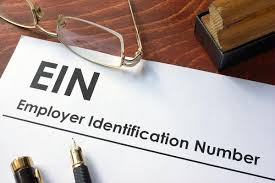In spite of the fact that tax season has arrived, the process need not be intimidating. Beginning with FICA, we’ll explain the tax filing lingo, paperwork, and due dates you’ll need to comprehend for the upcoming tax year, 2023. The FICA was first mandated by the Federal Insurance Contribution Act in the 1930s. and have been in use to finance Social Security and Medicare, two important components of the government’s social safety net, since the Great Depression. Ultimately, this means that while nobody enjoys paying taxes, with FICA you can rest assured that your payments will be repaid by the government in the form of retirement and healthcare benefits. You’re still unsure of how your taxes on Social Security and Medicare relate to you. Here’s what to know about FICA Tax, who is exempt from paying these taxes, and how it differs from Federal Income Tax (FICA vs FIT)
What Is FICA?
The Federal Insurance Contributions Act, also known as FICA, is a piece of federal legislation that mandates the deduction of three distinct categories of employment taxes from the wages of workers by their respective employers.
In 1935, the United States government passed the Federal Insurance Contributions Act (FICA), which requires companies and workers to pay a payroll tax of 6.2% of each worker’s gross income. The funds that are collected are put toward supporting government programs such as Social Security and Medicare.
From the inception, the act’s underlying premise was always that employees would set aside a portion of their wages during their working years to support Social Security (and eventually Medicare) so that they could rely on these programs in their retirement.
This paycheck taxes amount to 15.3 percent, broken down as 12.4 percent in Social Security and 2.9 percent in Medicare. Also, for some high-income workers, an additional 0.9% Medicare surtax must be withheld by their employers.
You may then wonder who is responsible for making FICA contributions. Basically, FICA taxes are paid in part by both employees and employers. Employers are responsible for withholding and remitting the employee and employer contributions to these taxes. These taxes are first paid over to the Federal Revenue Service, and then they are sent over to the Social Security Administration so that they can be used for payments for retirement and those who are receiving disability benefits. The Medicare tax also contributes to the federal government’s Medicare trust fund to cover medical costs for persons 65 and above and those with disabilities.
Understanding FICA Tax?
The Federal Insurance Contributions Act (FICA) was enacted in 1935 by the United States Congress. Its goal was to amass funds for President Franklin D. Roosevelt’s new Social Security program that was launched that same year.
Roosevelt thought that the FICA tax that workers pay should be compensation for the workers themselves. He didn’t want Social Security, Medicare, or any other federally funded program that provided for their retirement, disability, or death to be subject to budget cuts. He was basically worried that the politicians would steal the money for themselves.
Medicare, signed into law by President Lyndon B. Johnson in 1965, included a new payroll tax that would be used to pay for health insurance and related services.
Paying into FICA is generally mandatory. The rate is subject to change on a yearly basis, however, it has been relatively constant since 1990. In accordance with the Consumer Price Index, the cap usually sees an adjustment annually.
FICA Rates and Limits
The Federal Revenue Service (IRS) states that FICA taxes consist of the hospital insurance tax and the old-age, survivors, and disability insurance taxes (Social Security) (Medicare). Every one of these operates at a distinct pace and rate.
If your salary is above the maximum wage basis for Social Security taxes, then you won’t have to pay any. In 2022, the amount was $147,000, but in 2023, it will be $160,200.
Medicare taxes on the other hand are levied on all earnings, without exception.
Employer and employee contributions to Social Security are split into two categories for 2022 and 2023, totaling 12.4%. Employers and employees each contribute 6.2% of the total.
Likewise, both the employee and the employer contribute 2.9% to Medicare. In this case, both the employee and the employer contribute 1.45%.
Workers who earn more over a certain threshold amount must pay an additional 0.9% Medicare tax. This sum for individuals in 2022 is $200,000 ($250,000 for married couples filing jointly).
So, a worker’s overall Medicare tax could be as high as 2.35% (1.45% plus 0.9%) depending on their income. The increased Medicare tax is not needed to be matched by employers.
FICA taxes are not the same as Social Security taxes; however, there’s a connection between the two. Your Social Security taxes are basically the 6.2% of your income that is deducted each month (up to the $160,300 taxable maximum in 2023). On the other hand, FICA, which is the Federal Insurance Contributions Act, stands for the combination of Social Security and Medicare taxes.
Can I Withdraw From FICA?
If the employer confirms eligibility and does not need a waiting period for the employee’s account reconciliation, participants may take money from the plan after leaving employment. The employee might be permitted to keep their money in the plan after changing jobs until a withdrawal is requested.
What Happens if I Didn’t Pay FICA?
Employers may be subject to both civil and criminal fines for improperly reporting and paying FICA taxes. Depending on the number of days after the payment is due the punishment might range from 2 percent to 15 percent of the tax payable.
What Is FICA Used For?
FICA’s main goal is to partially fund both Social Security and Medicare, which offer benefits to retirees, people with disabilities, and children.
How Much Is FICA 2023?
FICA taxes, which make up 15.3% of your wages, are a combination of Social Security and Medicare taxes. Hence your responsibility, which you must pay, is 7.65% of the overall cost. This comprises a 6.2% Social Security Tax and a 1.45% Medicare levy on your salary. According to the Internal Revenue Service.
How Do I Pay FICA?
The Federal Insurance Contributions Act (FICA) taxes, which are also referred to as payroll taxes, are withdrawn automatically from your paycheck. The government receives the money, as well as the matching contribution from your employer (which is an additional 7.65% of your wage), from your firm.
Who Is Exempt from FICA Taxes
Generally, there are some exceptions to the FICA tax that apply to particular wages. According to the Internal Revenue Service (IRS), any services employed students render are exempt from FICA taxes. If both the primary role of the organization and the student’s relationship with the employer are educational in nature, then the entity in question qualifies as a “school, college, or university.”
However, nonresidents are typically responsible for paying taxes related to Social Security and Medicare, according to the Internal Revenue Service (IRS). In general, the below categories of individuals who are exempt from paying FICA taxes:
#1. A-visa Holders: Employees who are receiving a salary in their official role as representatives of a foreign government.
#2. D-visa Holders: Members of the crew of a ship or aircraft whose employer or vessel is foreign, as well as those who render services outside of the United States.
#3. F-visa, J-visa, M-visa, Q-visa Holders: Employees who carry out work in the United States that is authorized by the United States Citizenship and Immigration Services, such as certain off-campus student employment, on-campus employment or practical training student employment as well as certain off-campus student employment.
#4. G-visa Holders: Employees of international organizations who are getting compensation for their work in those organizations.
#5. H-visas: Filipino nonimmigrant residents who work in Guam or nonimmigrants engaging in short-term agricultural work.
Other Exemptions
Additional pay and individuals who are exempt from Social Security and Medicare (FICA) taxes include:
- Ministers of churches who have been duly ordained, commissioned or licensed.
- Young people under 18 working for their parents.
- Student nurses who are paid under specific circumstances.
Individuals who are self-employed are not excluded from paying Social Security and Medicare taxes. However, they are subject to a unique and higher rate of taxation known as the “self-employment tax”. This meanwhile is because there is no employer match for their contributions. The overall tax rate is 15.3%, which is divided into two portions as follows:
- 12.4% goes to the Social Security system.
- 2.9% to Medicare
FIT vs FICA
Although both FICA and federal income tax has to do with your paycheck, they are two different levies that go toward supporting different facets of government.
FICA tax help fund the Social Security Trust Funds and the Medicare Hospital Insurance Trust Fund which also covers the costs of the benefits associated with both government programs.
Federal income taxes on the other hand are for financing public goods and services such as national parks, highways, and more. It also covers Interest accrued on U.S. government debt.
One thing unites these taxes (FICA VS FIT); The Internal Revenue Service (IRS) collects both types of taxes and distributes the funds to their respective agencies.
Both FICA vs FIT contribute significantly to the Federal government’s ability to cover its day-to-day operating costs. For a very long period of time, the government has generally operated with a deficit. This means that current expenditures have exceeded current revenues. Hence, it’s important to note that not one penny of the money you contribute now goes into a savings account for your future. Rather, the legislation states that whenever you reach retirement age or Medicare eligibility age, you will be eligible to apply for these old age benefits in accordance with the law. Non-discretionary spending, such as Medicare and Social Security payments, accounts for the bulk of the federal government’s budget.
Do You Get FICA Money Back?
If you pay more in FICA taxes than you should, you are eligible for a return of the extra money. If you are not liable for these taxes but there is a deduction from your pay, you may have overpaid.
Is FICA Automatically Deducted?
Yes. The FICA taxes, or payroll taxes, are withdrawn automatically from your paycheck. The government receives the money, as well as the matching contribution from your employer (which is an additional 7.65% of your wage), from your firm.
How Do I Claim My FICA Tax Refund?
Even while many immigrants do not due FICA tax, their employer sometimes does not become aware of this until it is too late. You are eligible for a FICA tax refund if your employer withheld FICA taxes from you despite the fact that you are exempt from them, whether unintentionally or as a result of your failure to give sufficient information about the type of visa you were traveling on.
You can get it as soon as possible by asking your employer for it. However, if that fails, the IRS will issue it as well. The IRS route is more difficult and time-consuming, but it will ultimately result in a refund.
Conclusion
Workers that earn wages must pay into Social Security and Medicare through the Federal Insurance Contributions Act (FICA).
Simply put, if you’re getting earned income such as salary or profits from a business, you must pay FICA tax
Your employer and you will each pay half of the Federal Insurance Contributions Act (FICA) tax that is withheld from your paycheck. The self-employed, on the other hand, must cover the roles of both employee and employer, thus they must pay 15.3 percent in federal self-employment tax.
In the end, you’ll be qualified for what is known as earned benefits. Automatically, you will have 100% rights to them because you paid for them beforehand.
Related Articles
- SOCIAL SECURITY TAX LIMIT: What is the Social Security tax limit for 2023?
- FICA TAXES: What It Is, Rate, and How to Calculate It
- MEDICARE REIMBURSEMENTS: All You Need To Know In 2023
- Payroll Report: Detailed Guide to Payroll Report






